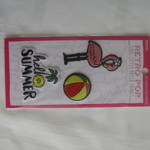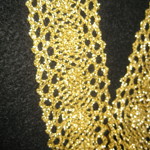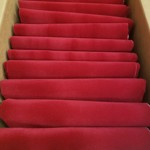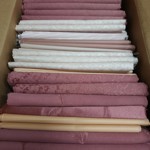1 I MAY LOOK CALM BUT IN MY HEAD I'VE ALREADY KILLED YOU 3 TIMES IRON ON PATCH APPLIQUE BADGE
-
Want this? Get started withGet Started50 PTSFREE!
About 4 x 1.5 Inches ~
Black & White
New, Never Used it!
::
Adhesive Back, Just Iron On! Great for shirts, hats, baby onesie, backpack, etc.
An embroidered patch, also known as a cloth badge, is a piece of embroidery which is created by using a fabric backing and thread. The art of making embroidered patches is an old tradition and was originally done by hand. High-speed, computerized machines have led to mass production. There are various methods of affixing them to the fabric surface. Embroidered patches can be attached with a pin, sewn on, or affixed with more modern methods such as iron-on, dryer heat-activated adhesive, and Velcro backing.Embroidered patches—an important identification tool for military and other uniformed personnel—trace their roots thousands of years ago to ancient cultures of the Mediterranean, Mideast, China, India and South America, where the art of decorating fabric with thread stitching originated. Elaborate hand-stitched designs and patterns were used to embellish the robes of royalty and for religious artifacts.
Today, embroidered patches are used by government organisations (including uniforms of military forces, emergency services and other specialised workers), sports teams and companies in the private sector to denote rank, job, specific position or specialised unit. Youth groups, including sports teams, scouting organizations and specialized clubs, often wear clothing emblazoned with embroidered patches. They are also used by space agencies on the uniforms of astronauts to denote the mission. Patches are collected by enthusiasts as well.Before the advent of computer technology, patches were made by hand. The general process, however, remains the same today. First, a fabric backing is cut to shape. To prevent fraying, the edges of the backing are heat-sealed. Then, the thread is stitched into place.
Ashley1504
Black & White
New, Never Used it!
::
Adhesive Back, Just Iron On! Great for shirts, hats, baby onesie, backpack, etc.
An embroidered patch, also known as a cloth badge, is a piece of embroidery which is created by using a fabric backing and thread. The art of making embroidered patches is an old tradition and was originally done by hand. High-speed, computerized machines have led to mass production. There are various methods of affixing them to the fabric surface. Embroidered patches can be attached with a pin, sewn on, or affixed with more modern methods such as iron-on, dryer heat-activated adhesive, and Velcro backing.Embroidered patches—an important identification tool for military and other uniformed personnel—trace their roots thousands of years ago to ancient cultures of the Mediterranean, Mideast, China, India and South America, where the art of decorating fabric with thread stitching originated. Elaborate hand-stitched designs and patterns were used to embellish the robes of royalty and for religious artifacts.
Today, embroidered patches are used by government organisations (including uniforms of military forces, emergency services and other specialised workers), sports teams and companies in the private sector to denote rank, job, specific position or specialised unit. Youth groups, including sports teams, scouting organizations and specialized clubs, often wear clothing emblazoned with embroidered patches. They are also used by space agencies on the uniforms of astronauts to denote the mission. Patches are collected by enthusiasts as well.Before the advent of computer technology, patches were made by hand. The general process, however, remains the same today. First, a fabric backing is cut to shape. To prevent fraying, the edges of the backing are heat-sealed. Then, the thread is stitched into place.
Ashley1504




















Questions & Comments
Sort By: